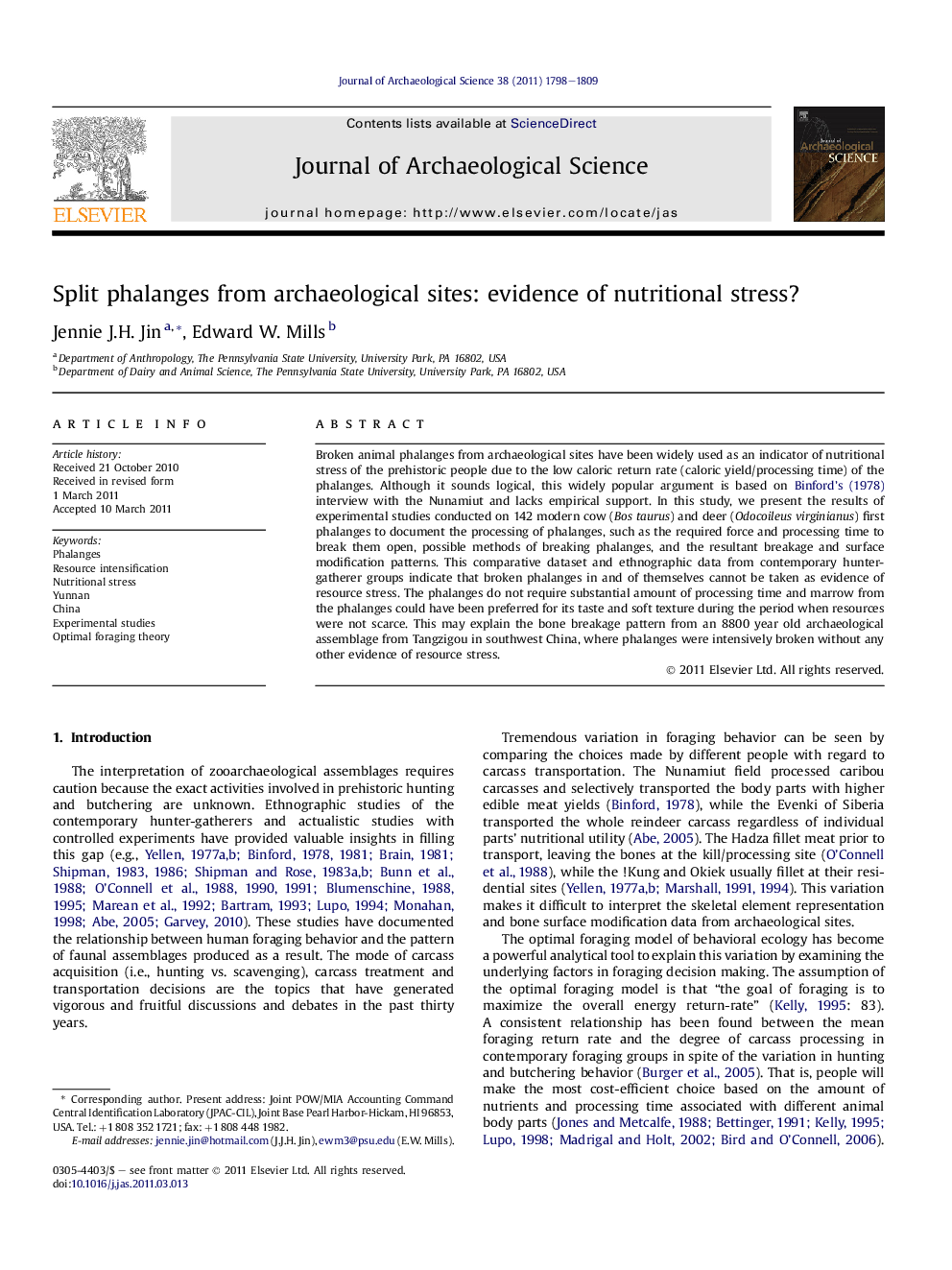| Article ID | Journal | Published Year | Pages | File Type |
|---|---|---|---|---|
| 1035811 | Journal of Archaeological Science | 2011 | 12 Pages |
Broken animal phalanges from archaeological sites have been widely used as an indicator of nutritional stress of the prehistoric people due to the low caloric return rate (caloric yield/processing time) of the phalanges. Although it sounds logical, this widely popular argument is based on Binford’s (1978) interview with the Nunamiut and lacks empirical support. In this study, we present the results of experimental studies conducted on 142 modern cow (Bos taurus) and deer (Odocoileus virginianus) first phalanges to document the processing of phalanges, such as the required force and processing time to break them open, possible methods of breaking phalanges, and the resultant breakage and surface modification patterns. This comparative dataset and ethnographic data from contemporary hunter-gatherer groups indicate that broken phalanges in and of themselves cannot be taken as evidence of resource stress. The phalanges do not require substantial amount of processing time and marrow from the phalanges could have been preferred for its taste and soft texture during the period when resources were not scarce. This may explain the bone breakage pattern from an 8800 year old archaeological assemblage from Tangzigou in southwest China, where phalanges were intensively broken without any other evidence of resource stress.
► Broken phalanges have been used as an indicator of nutritional stress. ► A large-scale experimental studies have been done on modern cow/deer phalanges. ► Phalanges are easy to break and marrow could have been preferred for its taste. ► Thus, broken phalanges in and of themselves are not evidence of resource stress.
